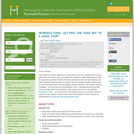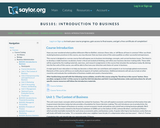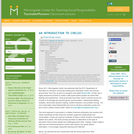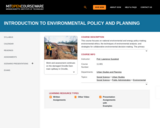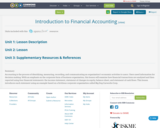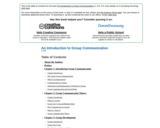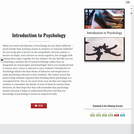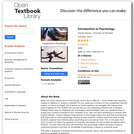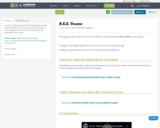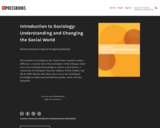Short Description:
The founders of sociology in the United States wanted to make a difference. A central aim of the sociologists of the Chicago school was to use sociological knowledge to achieve social reform. A related aim of sociologists like Jane Addams, W.E.B. DuBois, and Ida B. Wells-Barnett and others since was to use sociological knowledge to understand and alleviate gender, racial, and class inequality. NewPara https://doi.org/10.24926/8668.2401 ISBN: 978-1-946135-24-7
Long Description:
Sociology: Understanding and Changing the Social World is adapted from a work produced by a publisher who has requested that they and the original author not receive attribution. This adapted edition is produced by the University of Minnesota Libraries Publishing through the eLearning Support Initiative. Though the publisher has requested that they and the original author not receive attribution, this adapted edition reproduces all original text and sections of the book, except for publisher and author name attribution.
The founders of sociology in the United States wanted to make a difference. A central aim of the sociologists of the Chicago school was to use sociological knowledge to achieve social reform. A related aim of sociologists like Jane Addams, W.E.B. DuBois, and Ida B. Wells-Barnett and others since was to use sociological knowledge to understand and alleviate gender, racial, and class inequality.
It is no accident that many sociology instructors and students are first drawn to sociology because they want to learn a body of knowledge that could help them make a difference in the world at large. Sociology: Understanding and Changing the Social World is designed for this audience. It presents a sociological understanding of society but also a sociological perspective on how to change society, while maintaining the structure and contents of the best mainstream texts.
Several pedagogical features of the book convey the sociological perspective and change theme:
Almost every chapter begins with a Social Issues in the News story from recent media coverage that recounts an event related to the chapter’s topic and proceeds with thought-provoking discussion about the social issue related to the event. Additional discussion elsewhere in the chapter helps students understand the basis for this issue and related issues. This dual treatment of the news story will help students appreciate the relevance of sociology for newsworthy events and issues.
Three types of boxes in almost every chapter reflect the U.S. founders’ emphasis on sociology and social justice. The first box, Sociology Making a Difference, discusses a social issue related to the chapter’s topic and shows how sociological insights and findings have been used, or could be used, to address the issue and achieve social reform. The second box, Learning from Other Societies, discusses the experience in another nation(s) regarding a social issue related to the chapter; this box helps students appreciate what has worked and not worked in other nations regarding the issue and thus better understand how social reform might be achieved in the United States. The third box, What Sociology Suggests, summarizes social policies grounded in sociological theory and research that hold strong potential for addressing issues discussed in the chapter.
In addition, many chapters contain tables called Theory Snapshots. These tables provide a quick reference tool for students to understand the varying theoretical approaches to the sociological topic that the chapter is discussing.
Finally, almost every chapter ends with a Using Sociology vignette that presents a hypothetical scenario concerning an issue or topic from the chapter and asks students to use the chapter’s material in a decision-making role involving social change. These vignettes help students connect the chapter’s discussion with real-life situations and, in turn, to better appreciate the relevance of sociological knowledge for social reform.
Drawing on these features and other discussion throughout the book, a brief and unique final chapter, ”Conclusion: Understanding and Changing the Social World,“ sums up what students have learned about society and themselves and reviews the relevance of sociology for achieving social change.
Sociology: Understanding and Changing the Social World makes sociology relevant for today’s students by balancing traditional coverage with a fresh approach that ironically takes them back to sociology’s American roots in the use of sociological knowledge for social reform.
Word Count: 253438
ISBN: 978-1-946135-24-7
(Note: This resource's metadata has been created automatically by reformatting and/or combining the information that the author initially provided as part of a bulk import process.)
